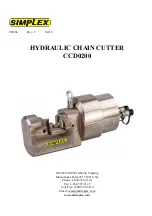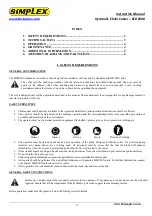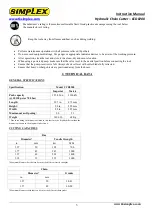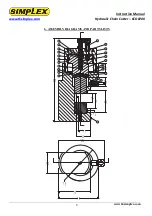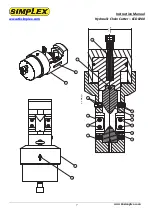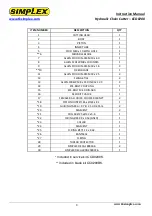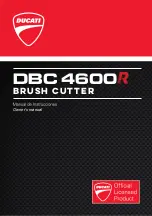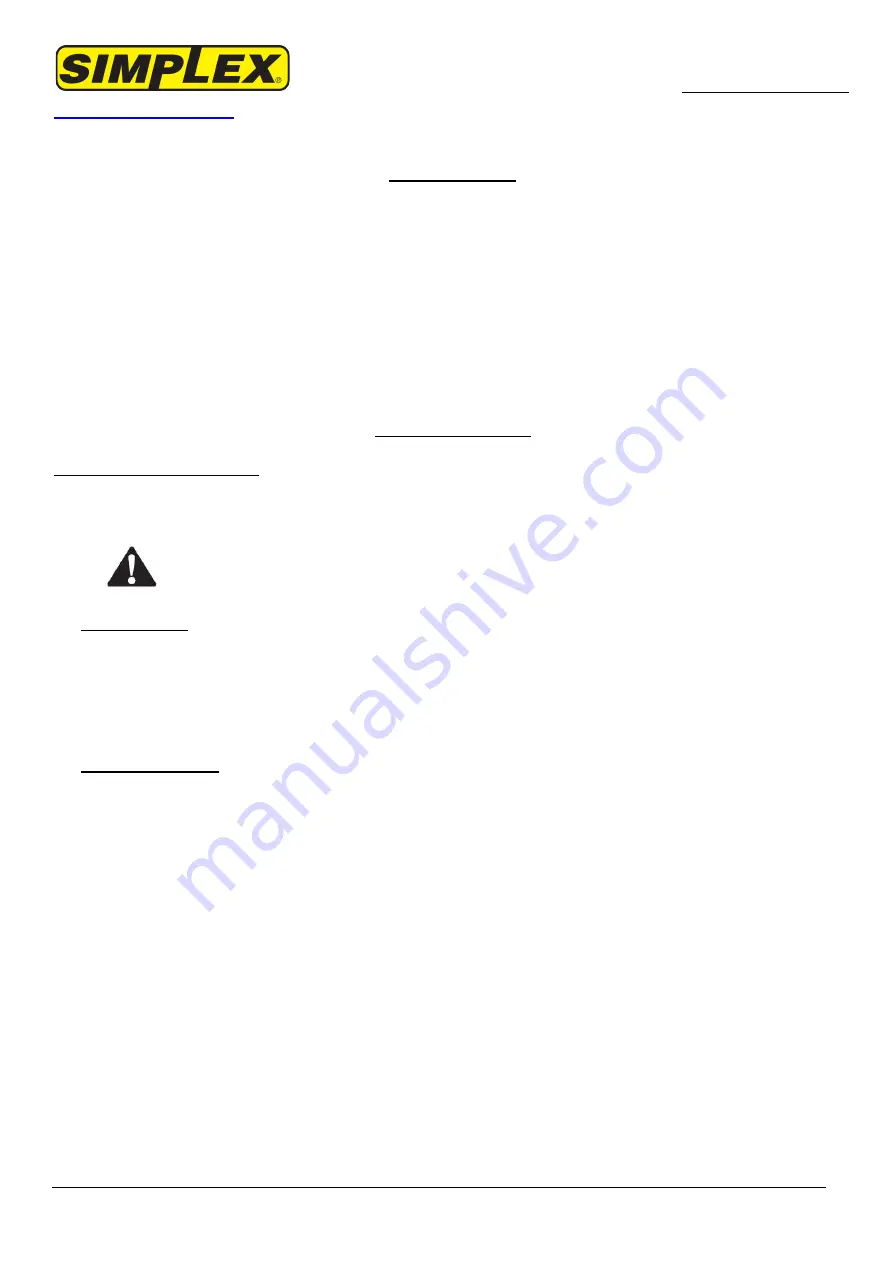
Instruction Manual
www.tksimplex.com
Hydraulic Chain Cutter – CCD0200
www.tksimplex.com
4
3. OPERATION
1.
Assemble the complete system, and make sure the fitting of pump, hoses, couplers and tool is leak free and correct. This is
a double acting tool, so ensure that both couplers are connected.
2.
On vented pumps, be sure that vent/fill cap (if equipped) is in the “VENT” position to allow proper pump functioning.
3.
Before use, test the circuit by operating the pump with the control valve in the advance position and check that the piston
advances. Then, move the control valve to the retract position and check that the piston retracts. Fully advance and retract
the piston several more times to remove any trapped air. Be sure that cylinder movement is smooth in both directions.
4.
Insert the chain to be cut in the gap between the fixed and movable blades (max. 1.97 inch or 50 mm).
5.
Move the control valve to the advance position. Operate the pump until the blade moves forward and the chain is cut.
6.
Retract the blade by moving the control valve to the retract position.
7.
Remove any traces of chain material before making another cut.
4. MAINTENANCE
REPLACEMENT OF BLADES
Note:
Refer to Section 6 of this manual for parts list and item numbers. To help prevent damage to the tool, always perform
blade replacement procedures in a clean and dry work area.
To prevent possible serious injury, always relieve hydraulic pressure (0 psi/bar) and disconnect hydraulic hoses
from tool before beginning blade replacement procedures.
A.
FIXED BLADE:
1.
Loosen and remove the studs (11).
2.
Push the old blade (10) out using a nail inserted through the hole in the cutting head. Remove the old blade.
3.
Apply Loctite 242 thread sealant to the threads of the studs (11).
4.
Insert a new blade (10). Reinstall and tighten the studs (11) to secure the blade.
B.
MOVABLE BLADE:
Note:
Be careful that piston does not slide out of the tool body during the following procedure. Piston (3) will be unretained when
cutting head is removed in step 2.
1.
Loosen and remove the
outer
studs (9), on both sides of the piston (3).
2.
Unscrew the
inner
studs (9) about one turn but do not remove them.
3.
Loosen the screw (8).
4.
Firmly grasp the cutting head (1). Unscrew the cutter body (2) from the cutting head.
5.
Loosen and remove the screw (7). Remove the old blade (6).
6.
Mount a new blade (6).
7.
Apply Loctite 242 thread sealant to the threads of the screw (7).Then, reinstall and tighten the screw (7) to secure the blade.
8.
Thread the cutter body (2) fully into the cutting head (1). Tighten the screw (8).
9.
Adjust the clearance between the
inner
studs (9) and the piston (3).
Note: The
inner
studs (9) act as a piston guide. Turn each
inner
stud in or out as needed to adjust the clearance. There must
be sufficient clearance to allow the piston (3) to slide freely, but with a minimal amount of lateral movement. Clearance
should be even on both sides of the piston.
10.
Apply Loctite 242 thread sealant to the threads of the
outer
studs (9). Then, reinstall and tighten the
outer
studs on both
sides of the piston (3).

